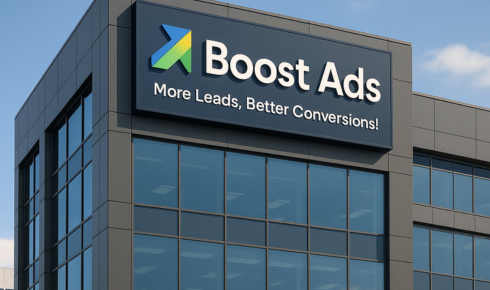In the fast-paced world of Digital Marketing Portland, businesses must stay ahead by leveraging the right tools and strategies. Whether you’re a small local brand or a growing enterprise, having the right digital toolkit can make a significant difference in your marketing ROI. From SEO and social media to automation and analytics, the right combination of tools can streamline your efforts and improve your results.
Below is a comprehensive guide to essential digital marketing tools and how Portland businesses can effectively use them.
1. Search Engine Optimization (SEO) Tools
Why They Matter:
SEO tools are critical for improving your website’s visibility on search engines like Google. They help you identify keywords, monitor rankings, audit your site’s health, and analyze competitors.
Tools to Use:
- SEMrush and Ahrefs for keyword research and backlink analysis.
- Screaming Frog for technical site audits.
- Google Search Console to monitor indexing issues and keyword performance.
How to Use:
- Start by conducting keyword research relevant to your business and location.
- Use SEO tools to identify high-volume, low-competition keywords.
- Perform a site audit to fix broken links, optimize images, and improve site speed.
- Monitor keyword rankings weekly and adjust your content strategy accordingly.
Example:
A local Portland bakery used SEMrush to identify that “gluten-free cupcakes Portland” was a frequently searched term. By optimizing blog posts and product pages around this phrase, their site traffic doubled in three months.
2. Content Management Systems (CMS)
Why They Matter:
A good CMS makes it easy to publish, update, and manage your website content without requiring deep technical knowledge.
Tools to Use:
- WordPress – most popular and flexible.
- Squarespace – user-friendly for small businesses.
- HubSpot CMS – integrated with CRM and marketing tools.
How to Use:
- Choose a CMS that matches your business needs and technical comfort level.
- Use built-in SEO plugins (e.g., Yoast for WordPress) to optimize content.
- Maintain a regular publishing schedule for blogs and updates.
- Ensure your CMS is mobile-friendly and secure with plugins or updates.
Example:
A Portland yoga studio revamped their site using WordPress and a yoga-themed template. With a blog on wellness tips and keyword-rich class descriptions, their organic traffic grew by 60%.
3. Customer Relationship Management (CRM) Systems
Why They Matter:
CRM tools help you track leads, segment customers, and personalize your marketing campaigns, ensuring you’re always nurturing the right people at the right time.
Tools to Use:
- HubSpot CRM – great for small to mid-sized businesses.
- Salesforce – powerful for enterprises.
- Zoho CRM – affordable with solid features.
How to Use:
- Import your customer database into the CRM.
- Segment customers based on behavior, demographics, or lifecycle stage.
- Set up automated email workflows based on customer actions.
- Monitor open rates, click-throughs, and conversions to refine campaigns.
Example:
A local HVAC company in Portland used HubSpot CRM to set up email reminders for seasonal tune-ups, resulting in a 35% increase in repeat service appointments.
4. Social Media Management Tools
Why They Matter:
Managing multiple social platforms can be time-consuming. These tools help you schedule posts, analyze engagement, and stay consistent with branding.
Tools to Use:
- Hootsuite or Buffer for scheduling and analytics.
- Canva for designing engaging graphics.
- Sprout Social for more in-depth reporting and CRM integration.
How to Use:
- Link all your social media accounts to a single dashboard.
- Plan and schedule content weekly or monthly.
- Track engagement rates, clicks, and follower growth.
- Adjust content types (e.g., reels, stories, carousels) based on performance.
Example:
A Portland-based event planning business increased Instagram engagement by 80% after using Canva templates and Buffer for consistent weekly posts.
5. Email Marketing Platforms
Why They Matter:
Email is still one of the highest-ROI marketing channels. With the right platform, you can automate campaigns, personalize messaging, and track performance in real time.
Tools to Use:
- Mailchimp for ease of use and automation.
- Constant Contact for small businesses.
- ActiveCampaign for behavior-based campaigns.
How to Use:
- Segment your list by customer type, interest, or engagement level.
- Design branded templates for newsletters and promos.
- Set up automated workflows (e.g., welcome series, cart abandonment).
- A/B test subject lines, images, and CTAs for optimal results.
Example:
A boutique clothing store in Portland used Mailchimp’s automation to recover abandoned carts, increasing monthly sales by 25%.
6. Analytics & Tracking Tools
Why They Matter:
You can’t improve what you don’t measure. Analytics tools offer insights into user behavior, traffic sources, and conversions, helping you make data-driven decisions.
Tools to Use:
- Google Analytics 4 for web traffic and user journey tracking.
- Hotjar or Crazy Egg for heatmaps and session recordings.
- UTM.io for URL tracking and campaign analysis.
How to Use:
- Set up Google Analytics with key event tracking (e.g., form fills, purchases).
- Use heatmaps to see where users drop off or hesitate.
- Create custom dashboards to track KPIs like conversion rate, bounce rate, and session duration.
- Use UTM tags to measure campaign-specific traffic in GA4.
Example:
A Portland legal firm discovered through Hotjar that visitors weren’t scrolling past the hero image. Redesigning the homepage to feature services higher up improved inquiries by 40%.
7. Online Advertising Platforms
Why They Matter:
Paid ads can drive quick traffic, generate leads, and retarget interested users. When paired with strong organic strategies, PPC tools can provide an immediate visibility boost.
Tools to Use:
- Google Ads for search and display.
- Meta Ads Manager for Facebook and Instagram ads.
- LinkedIn Ads for B2B targeting.
How to Use:
- Start by identifying your campaign goals: awareness, lead gen, or conversions.
- Research relevant keywords or audience interests.
- Create compelling ad copy and visuals.
- Set up conversion tracking using GA4 and Meta Pixel.
- Monitor and optimize based on CTR and cost per acquisition (CPA).
Example:
A Portland-based SaaS startup used Google Ads to target keywords like “project management software for agencies,” resulting in a 3x return on ad spend within 60 days.
Final Thoughts
Choosing the right combination of tools is critical to the success of any Digital Marketing Service Portland strategy. Whether you’re focusing on SEO, content, automation, or analytics, each of these platforms brings unique value. The key lies not just in acquiring tools, but in knowing how to implement them effectively, monitor progress, and continuously optimize. By mastering the strategies above, Portland businesses can compete confidently in the ever-evolving digital marketplace.



